Summary Of The Working Process Of Pneumatic Valve Of Mi Portable Oxygen Machine
1. Structure introduction:

2. Intake, high pressure zone:
When the intake valve group is connected to the high pressure gas, the position of the red line is the high pressure area, and the arrow indicates the direction.
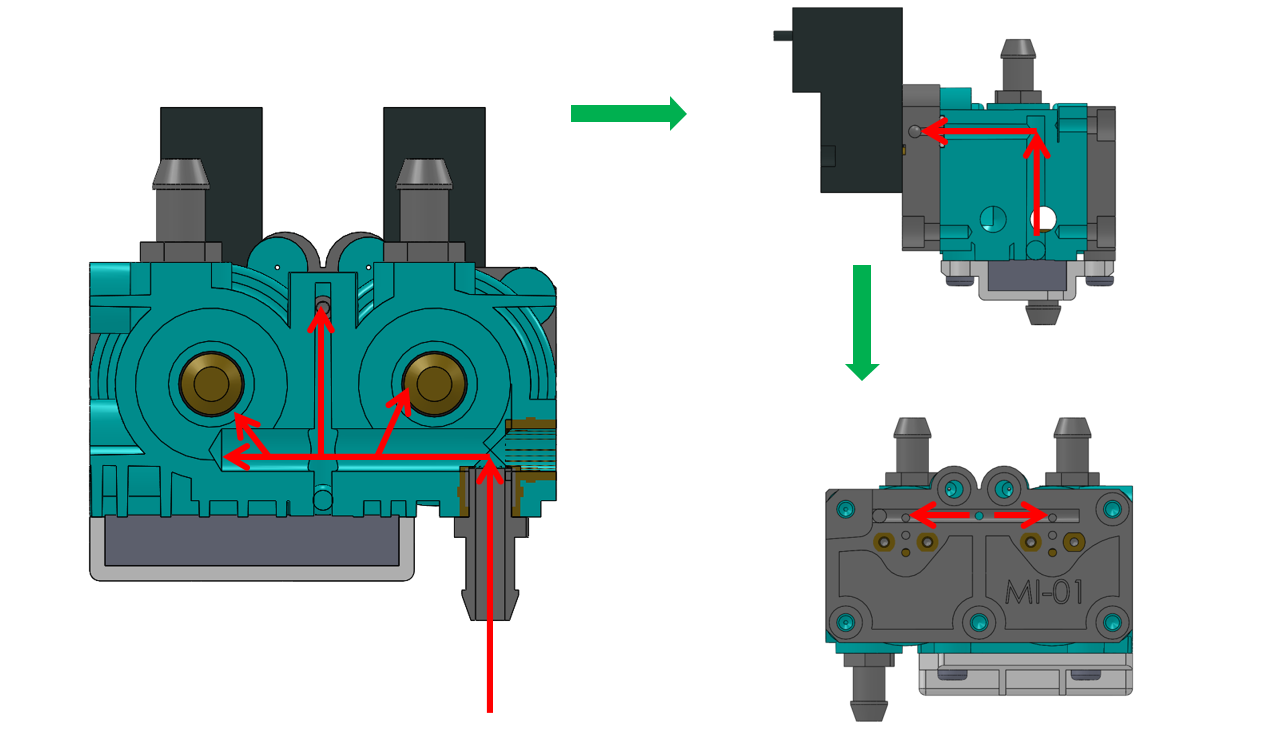
3. The initial pressure state of the control area:
When the valve group is in the starting state, two solenoid valves are opened, and both gas paths are inputted. This process is a stamping process, and both molecular sieves are pressurized to ensure efficiency.
There are key components in the control chamber: the diaphragm.
The diaphragm adjusts the position of the valve stem as the air pressure at both ends changes, thereby realizing the process of converting electrical signals into pneumatic signals.
The red arrow in the picture is the direction of high-pressure air, and the green arrow is the direction of air flow. Due to the reduction of green air flow, the pressure in the yellow area is less than the red area. The valve stem moves to the high-pressure chamber side, the diaphragm blocks the air inlet of the control chamber, and the molecular sieve inlet .
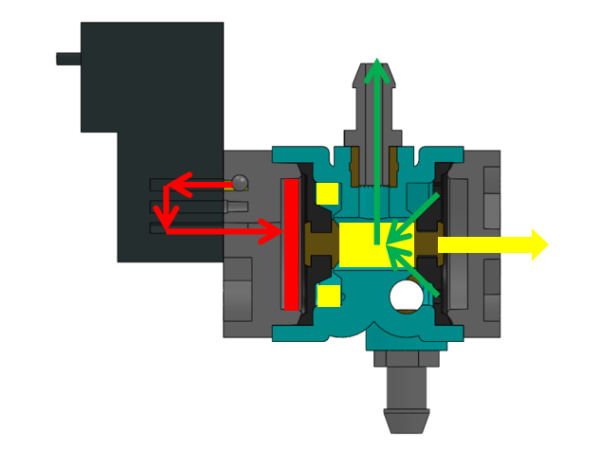
The two solenoid valves are opened at the same time, and the two molecular sieves are inflated at the same time.
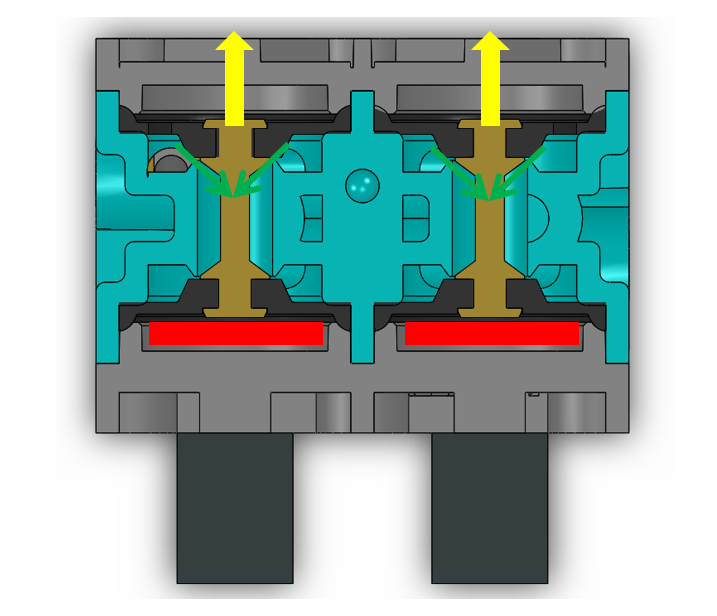
4. Control valve 1 gives a separate signal:
When the air pressure reaches a certain value, the solenoid valve 2 is closed, and the solenoid valve 1 supplies air alone.
The solenoid valve 2 is closed, the control chamber is connected to the atmosphere, and the air pressure is released. The two molecular sieves are connected by a purge hole. The pressure from molecular sieve 1 will push the valve stem to move to the control chamber, blocking the passage of high-pressure gas into molecular sieve 2, and molecular sieve 2 will exhaust.
The red arrow in the figure is the direction of high-pressure air, and the green arrow is the direction of air flow. Due to the reduction of green air flow, the pressure in the yellow area is smaller than the red area.
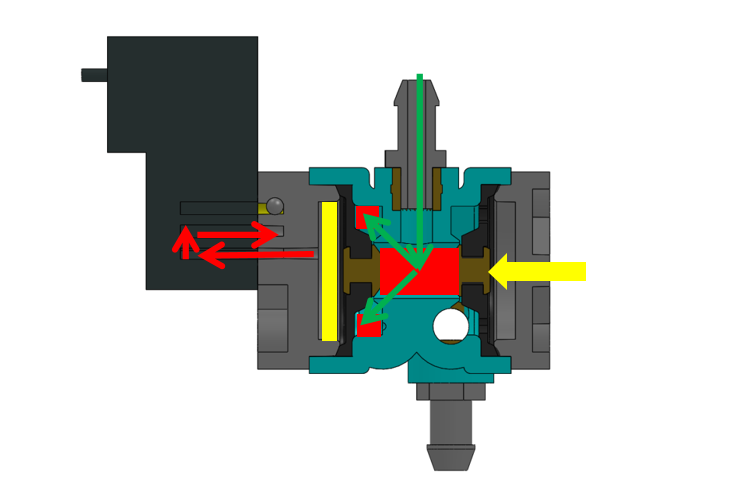
Solenoid valve 1 opens, solenoid valve 2 closes, molecular sieve 1 pressurizes oxygen, and molecular sieve 2 exhausts for regeneration.
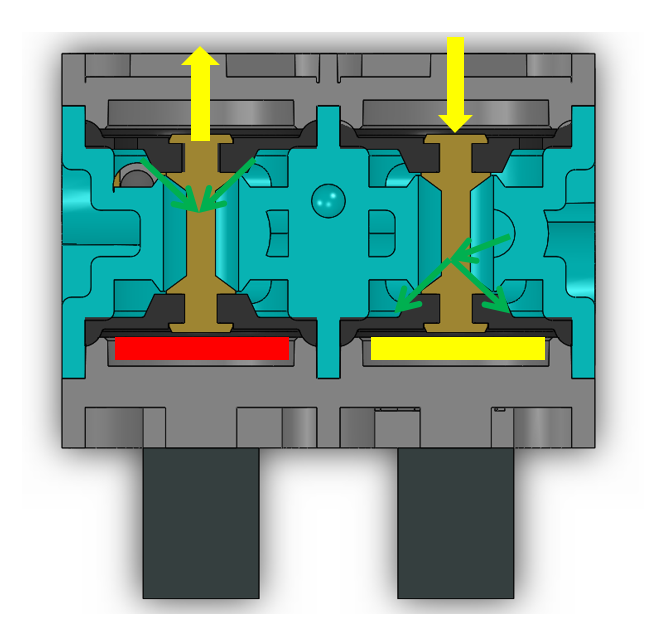
5. Voltage equalization and preparation for switching:
When molecular sieve 1 is close to saturation, the two solenoid valves open, both gas lines have gas input, and the pressure of molecular sieve 1 is quickly transferred to molecular sieve 2 until the pressures of the two molecular sieves are equal. This process is a stamping process, and the molecular sieve 2 is quickly pressurized to ensure efficiency.
The red arrow in the picture is the direction of high-pressure air, and the green arrow is the direction of air flow. Due to the reduction of green air flow, the pressure in the yellow area is less than the red area. The valve stem moves to the high-pressure chamber side, the diaphragm blocks the air inlet of the control chamber, and the molecular sieve inlet .
During the opening process, the two molecular sieves are connected by the valve group, and the pressure of molecular sieve 1 is rapidly transferred to molecular sieve 2 until the pressure of the two molecular sieves is balanced.
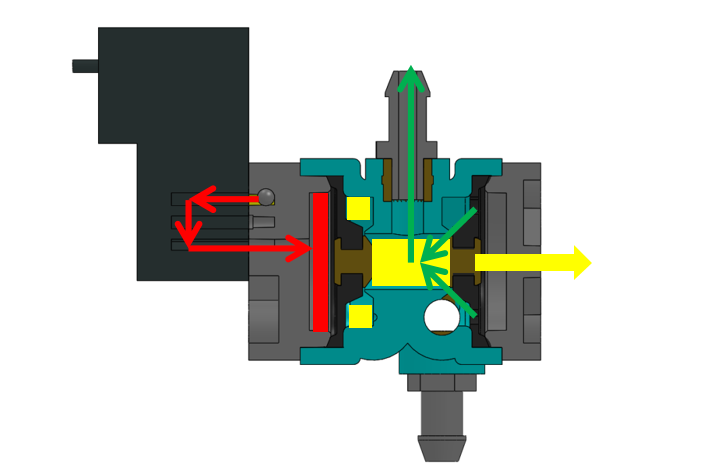
The two solenoid valves are opened at the same time, and the two molecular sieves are inflated at the same time.
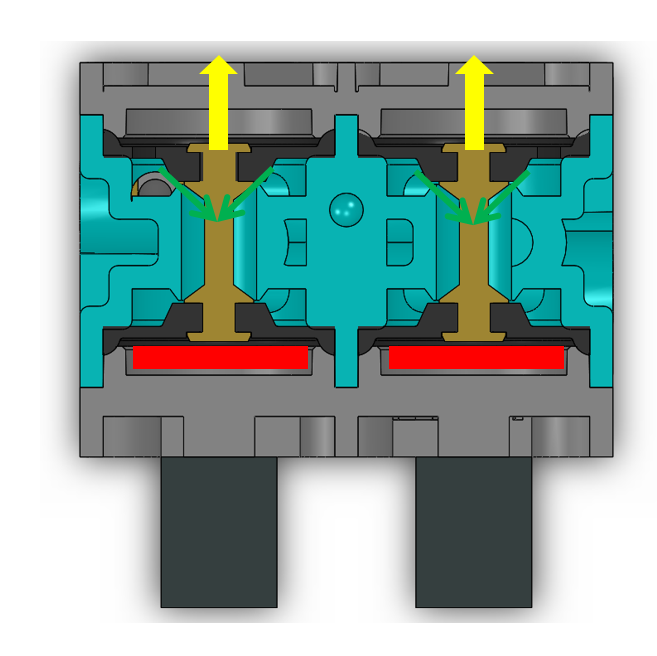
6. Control valve 2 gives a separate signal:
When the air pressure reaches a certain value, solenoid valve 1 closes and solenoid valve 2 supplies air alone.
The solenoid valve 1 is closed, the control chamber is connected to the atmosphere, and the air pressure is released. The two molecular sieves are connected by a purge hole. The pressure from molecular sieve 2 will push the valve stem to move to the control chamber, blocking the passage of high-pressure gas into molecular sieve 1, and molecular sieve 1 will exhaust.
The red arrow in the figure is the direction of high-pressure air, and the green arrow is the direction of air flow. Due to the reduction of green air flow, the pressure in the yellow area is smaller than the red area.
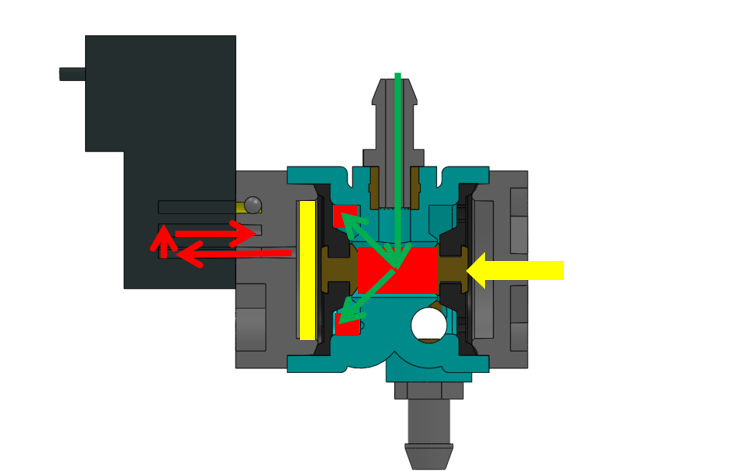
Solenoid valve 2 opens, solenoid valve 1 closes, molecular sieve 2 pressurizes oxygen, and molecular sieve 1 exhausts for regeneration.
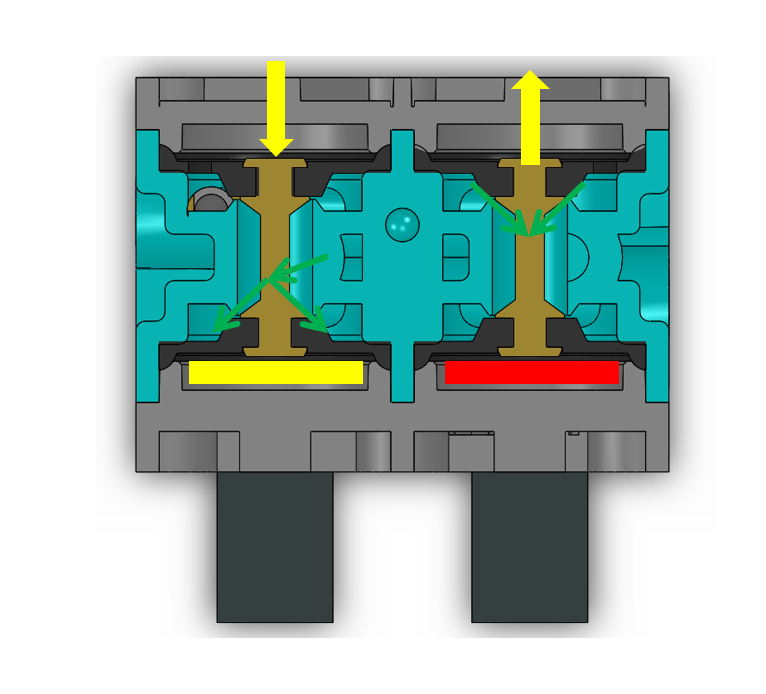
7. Equalize voltage and prepare to switch:
When molecular sieve 2 is close to saturation, the two solenoid valves open, both gas lines have gas input, and the pressure of molecular sieve 2 is quickly transferred to molecular sieve 1 until the pressures of the two molecular sieves are equal. This process is a stamping process, and the molecular sieve 1 is quickly pressurized to ensure efficiency.
In the picture, the red one is the high-pressure air, and the green one is the air flow direction. Due to the reduction of the green air flow, the pressure in the yellow area is less than the red area. The valve stem moves to the high-pressure chamber side, the diaphragm blocks the air inlet of the control chamber, and the molecular sieve enters the air.
During the opening process, the two molecular sieves are connected by the valve group, and the pressure of molecular sieve 2 is quickly transferred to molecular sieve 1 until the pressure of the two molecular sieves is balanced.
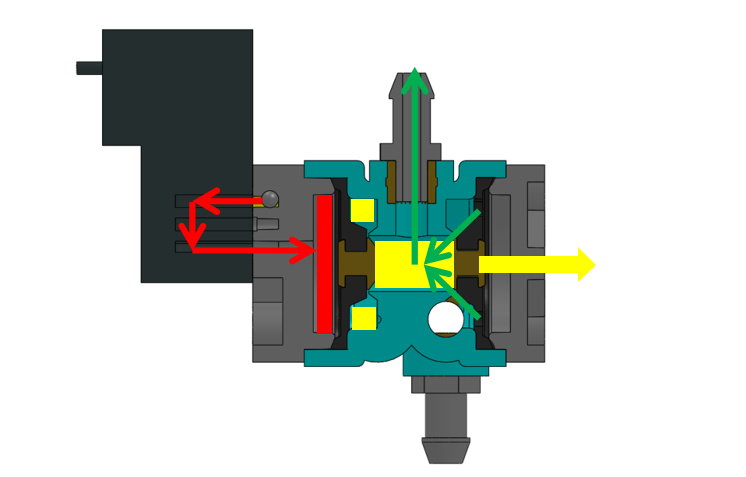
The two solenoid valves are opened at the same time, and the two molecular sieves are inflated at the same time.
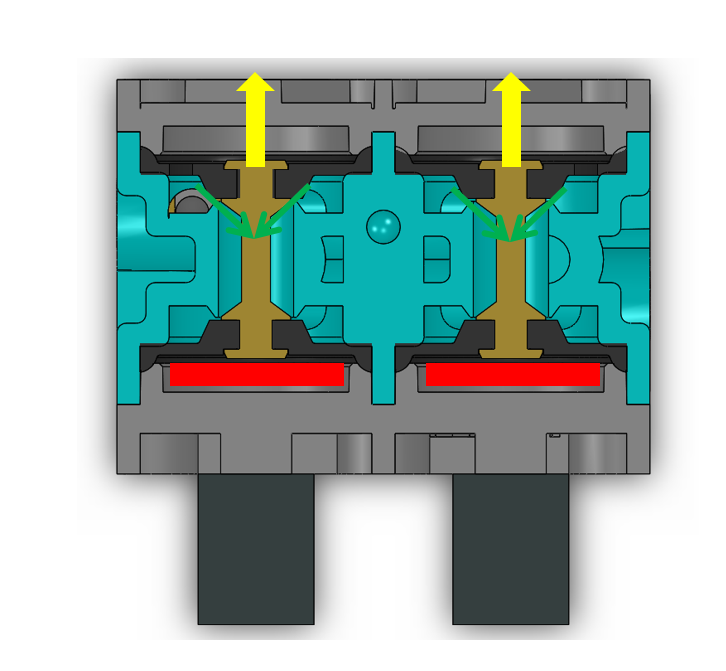
8. The two molecular sieves are recycled and the oxygen machine works normally:
Taking the above regeneration process as a unit, the oxygen production regeneration cycle is repeated repeatedly to form a benign closed-loop operation, which can provide long-term uninterrupted oxygen supply.
The blue arrow in the figure indicates the direction of the exhaust air flow. It is discharged from the molecular sieve and uniformly passes through the silencer cotton to reduce noise before being discharged from the valve group.
